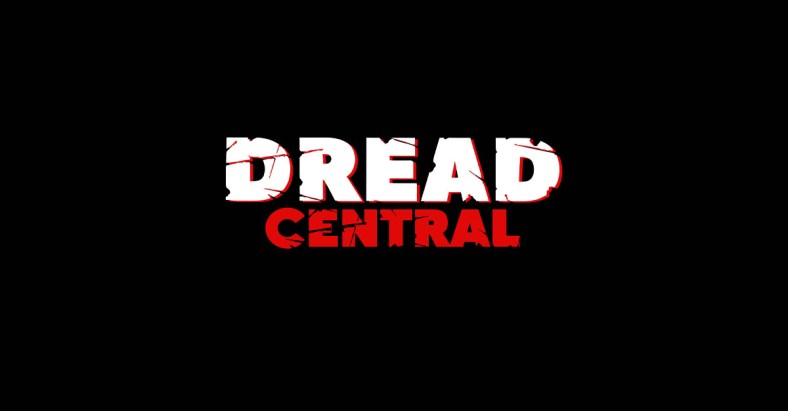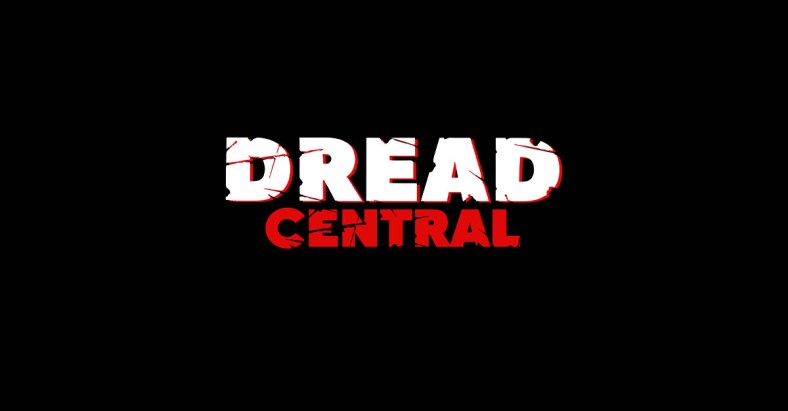Anarchy Parlor: Interview with Robert LaSardo

He’s got that unmistakable face with a 1,000-yard stare that could send chills down anyone’s spine… and then there’s all that ink! He’s Robert LaSardo, one of the hardest-working consistent actors with over 100 credits to his name between TV and film. There is no doubt about it; if you need a badass for your movie or show, this is the man to call, and he is on prominent display once again, this time in director Devon Down’s Anarchy Parlor (review).
Robert was gracious enough to settle in for a brief chat about the movie and his character so have a seat in the tattoo chair while we warm up the needle, and enjoy!
Dread Central – Can you give us a brief description of the film and your character, The Artist?
Robert LaSardo – It takes place in Lithuania, and the character I play is called The Artist, and he owns a tattoo shop and works with his apprentice, Uta (Sara Fabel). He performs various tasks all in the name of art, and not just tattooing – he works for very powerful, prominent men, and his family lineage has passed down a method for a specific type of art that’s considered extreme. We then have a bunch of tourist kids, hooting and hollering all over Europe, and they stumble into the tattoo shop, though they’ve been warned not to, and upon wandering into the murky landscape of Eastern Europe, find themselves in a world of shit!
I can’t judge the character or this thing that he’s been taught to do – he’s been constricted to work for very powerful men in Europe to perform this practice that involves the skin, so I sort of see him as the middle-man. He’s in the middle of a crossfire between these men who wage war against each other, and whoever the victor is, they claim a trophy, and the trophy manifests itself in the skin of the victim, and that skin is placed in a frame and put on a wall for those to sit back and gloat over the conquest. He didn’t create the war, but he’s there to stroke the ego of the powerful men – kind of like the days of the Renaissance with Michelangelo, who was assigned to paint the Sistine Chapel by the Pope, and I don’t know if he was crazy about the idea, but he had to do it.

DC – Now, The Artist in the film has a pretty hardcore method to his thinking when it comes to the art – did you see a little bit of yourself in this role?
RL – I guess regarding art, yes – as far as the creative aspect – making things, painting things, constructing things, as opposed to tearing things down, so that aspect of the character was refreshing. If I consider the mythology over the years that I’ve been invited to portray various characters, there hasn’t been a lot of room to create stuff, to bring something that is beautiful to the table. It’s more about barbarism and torture and circumstances where characters have to transcend those circumstances or are captured by them to endure horrific things. I think The Artist in relationship to me as a person is refreshing because aside from the storyline, he’s just there to paint and tattoo beautiful things. He’s not really crazy about the clientele, but in the end he’s still an artist, and regardless of what kind of art you’re taking part in – paint, sculpt, dance, write, sing – they’re there to entertain others and share a gift that is extraordinary, and I feel like I could relate to that part a little bit. I like to write, but I’ve not been allowed to communicate that aspect of creativity within the mainstream – I’ve been kind of locked up within this cage, so the part of Robert that relates to The Artist is that I’m hungry to be free from captivity and given some dexterity to move around and pull at the clay, so to speak, and make things that are interesting to look at, and such is the case with Anarchy Parlor: Some of the things we’re looking at aren’t always pretty, but they’re of a creative nature.
DC – Over the course of your film and TV career, you’ve played some pretty badass characters, and some of them have done some vicious stuff – is there a role or circumstance that someone could present to you that would have you saying, “No way – I’m not going to cross that line!”?
RL – The first thing that comes to mind is anything that involves children – I don’t think there’s any artistic license that will give a pass to a filmmaker in that regard, when it comes to children, or the defiling of innocence, it’s no longer creative – it’s pornography. There’s a fine line between being a creator or a pedophile – these sadistic fuckers who hide under the guise of an artist, saying, “I can do what I want, and don’t have to take on any responsibility.” I don’t agree with that – if someone said to me, “Hey Robert, there’s a scene in this movie with a child” – no way, I’m not comfortable with that, or hurting animals – I don’t want to assist that kind of negative energy in the world – it’s not a contribution – it takes away from the realm and contaminates the psyche of the collective soul. I recently worked with a filmmaker who’s known for being very controversial, and the character was in a prison situation where the men, by the very nature, are very barbaric, and in that sense, you get a pass because those men have already been convicted and they’re violent by nature, and the understanding is that “anything goes.” So within the arena of the coliseum – these gladiators or prisoners, when they get down and get it on, you can’t say it’s immoral – it’s just men, and they’re fighting. For whatever reason, men over the centuries have been sent to fight, whether it’s for political reasons, or reasons that are true to the heart, and some are just flat-out lies, and they sacrifice their lives and kill other men for a belief, so it’s really a gray area for that.
DC – Lastly, what’s up next for you on the horizon?
RL – I’m heading to Zuma Beach right now – I’m going to sit down and read a book and look at the waves – I need a break from all this! You want to meet me there? (laughs) But with all respect to the question, working with Devon Downs and Kenny Gage, I was so grateful that they allowed me to perform in the way that I was taught by my acting teachers and do justice to the art form. I think we’re in the situation now where we’re able to move forward with the franchise, so we’re hoping that we can create part 2, and I think that the question that comes to mind of some of the people who’ve already seen this film is “What happened to The Artist – where’s he going from here?” That’s something we’re seriously contemplating in terms of another movie, so that’s what my focus is on right now. There’s other projects – I just wrapped up filming a movie in the desert, and there are many other things that I’m grateful for, but obviously this is the only instance in my career where I’ve been allowed full range of a character like this and I don’t think we should stop now, especially for the fans of the film, which I appreciate. I’d love to see a potential back story for The Artist and maybe introduce some new characters that can get involved as well.
About Anarchy Parlor:
Anarchy Parlor is a horror film about a mysterious nomad simply known as “The Artist” who practices a dark art form passed down through the generations. He creates much more than tattoos for tourists who visit his Lithuanian Tattoo Parlor.
Anarchy Parlor is written and directed by Kenny Gage (Raze) and Devon Downs. This will be the first in the franchise of a new twist on horror films with “The Artist,” an amazingly creepy character that rivals “Jigsaw” in Saw or “Hannibal Lecter” in The Silence of the Lambs.
“Our conceit from the outset was to center the story around the traditional ‘bad guy’ archetype instead of the victims,” said Gage.
Downs adds, “Our film is scary, yes, intense, yes, gory, hell yes, but it is also fun!”
Anarchy Parlor is produced by Bill Ceresia (Raze), Andrew Pagana (Raze), Thomas Mahoney (Girl in the Photographs), Todd Slater, and Brett Donowho. The executive producer is Tony Distefano for A-Team Entertainment Inc.

Categorized: News
